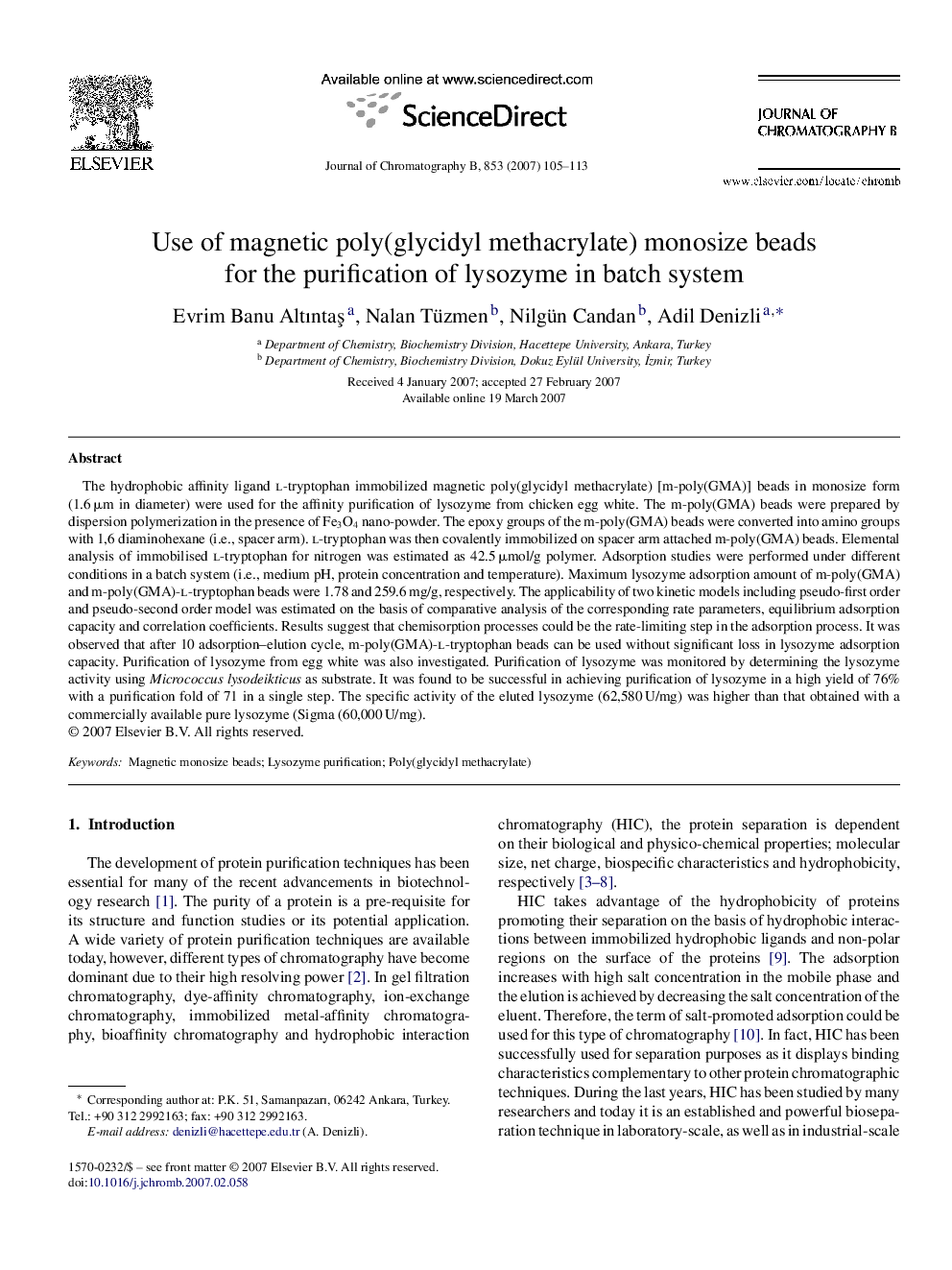| Article ID | Journal | Published Year | Pages | File Type |
|---|---|---|---|---|
| 1215260 | Journal of Chromatography B | 2007 | 9 Pages |
The hydrophobic affinity ligand l-tryptophan immobilized magnetic poly(glycidyl methacrylate) [m-poly(GMA)] beads in monosize form (1.6 μm in diameter) were used for the affinity purification of lysozyme from chicken egg white. The m-poly(GMA) beads were prepared by dispersion polymerization in the presence of Fe3O4 nano-powder. The epoxy groups of the m-poly(GMA) beads were converted into amino groups with 1,6 diaminohexane (i.e., spacer arm). l-tryptophan was then covalently immobilized on spacer arm attached m-poly(GMA) beads. Elemental analysis of immobilised l-tryptophan for nitrogen was estimated as 42.5 μmol/g polymer. Adsorption studies were performed under different conditions in a batch system (i.e., medium pH, protein concentration and temperature). Maximum lysozyme adsorption amount of m-poly(GMA) and m-poly(GMA)-l-tryptophan beads were 1.78 and 259.6 mg/g, respectively. The applicability of two kinetic models including pseudo-first order and pseudo-second order model was estimated on the basis of comparative analysis of the corresponding rate parameters, equilibrium adsorption capacity and correlation coefficients. Results suggest that chemisorption processes could be the rate-limiting step in the adsorption process. It was observed that after 10 adsorption–elution cycle, m-poly(GMA)-l-tryptophan beads can be used without significant loss in lysozyme adsorption capacity. Purification of lysozyme from egg white was also investigated. Purification of lysozyme was monitored by determining the lysozyme activity using Micrococcus lysodeikticus as substrate. It was found to be successful in achieving purification of lysozyme in a high yield of 76% with a purification fold of 71 in a single step. The specific activity of the eluted lysozyme (62,580 U/mg) was higher than that obtained with a commercially available pure lysozyme (Sigma (60,000 U/mg).
